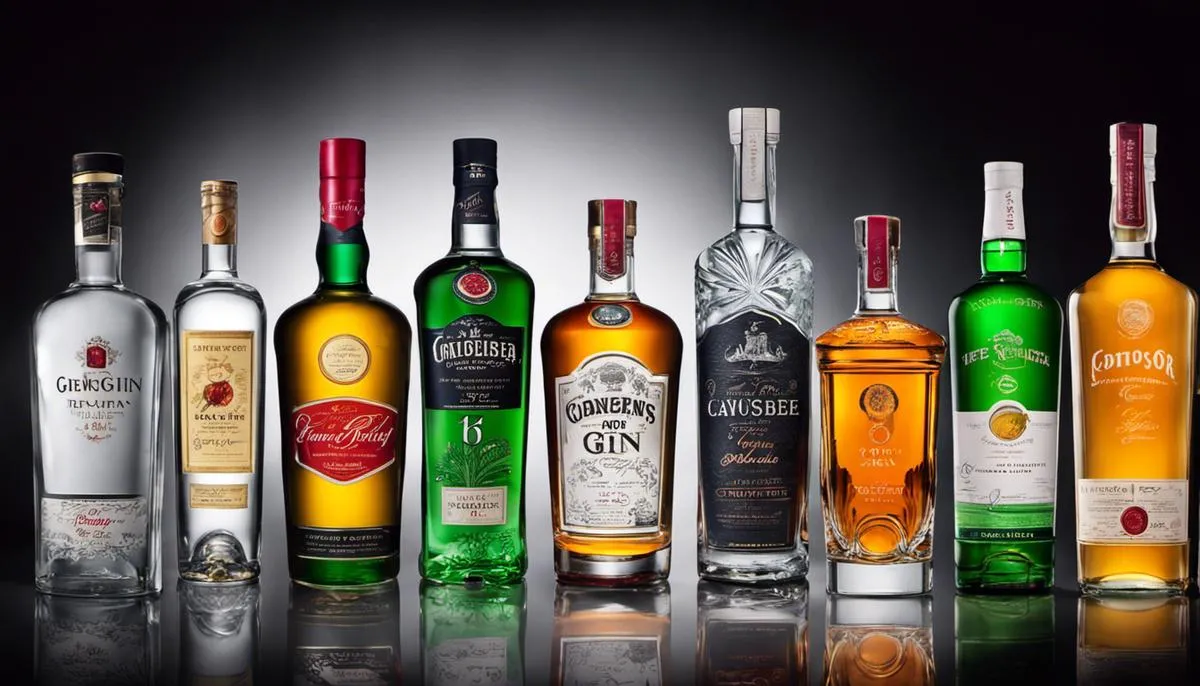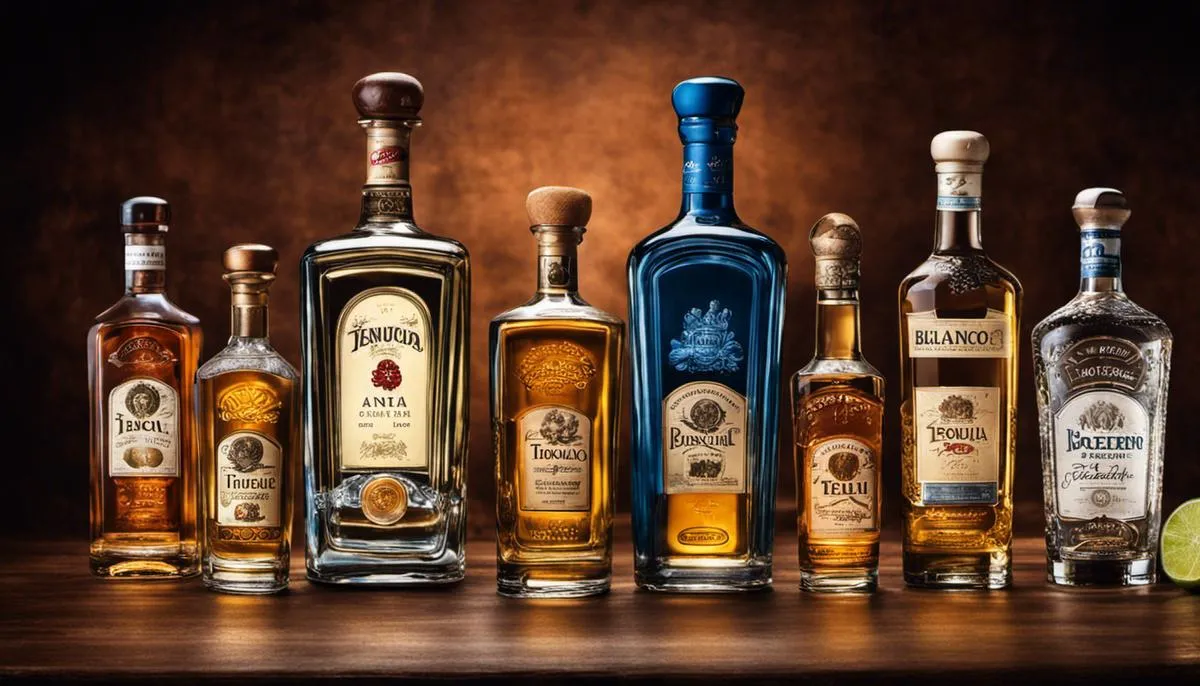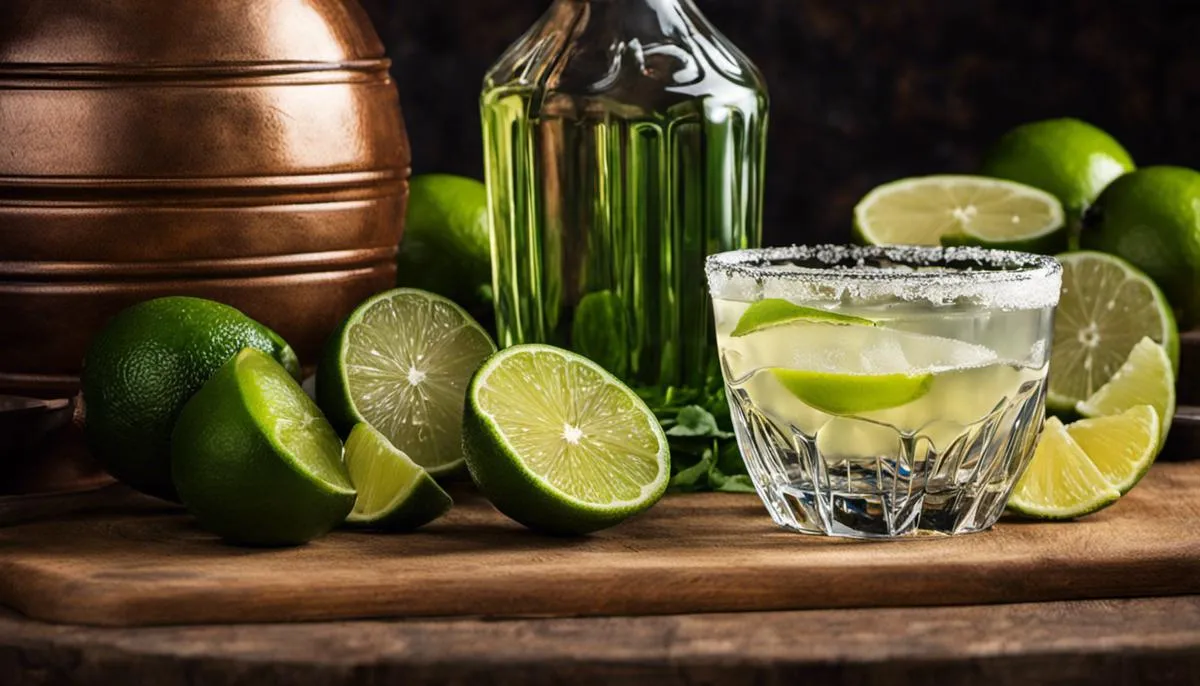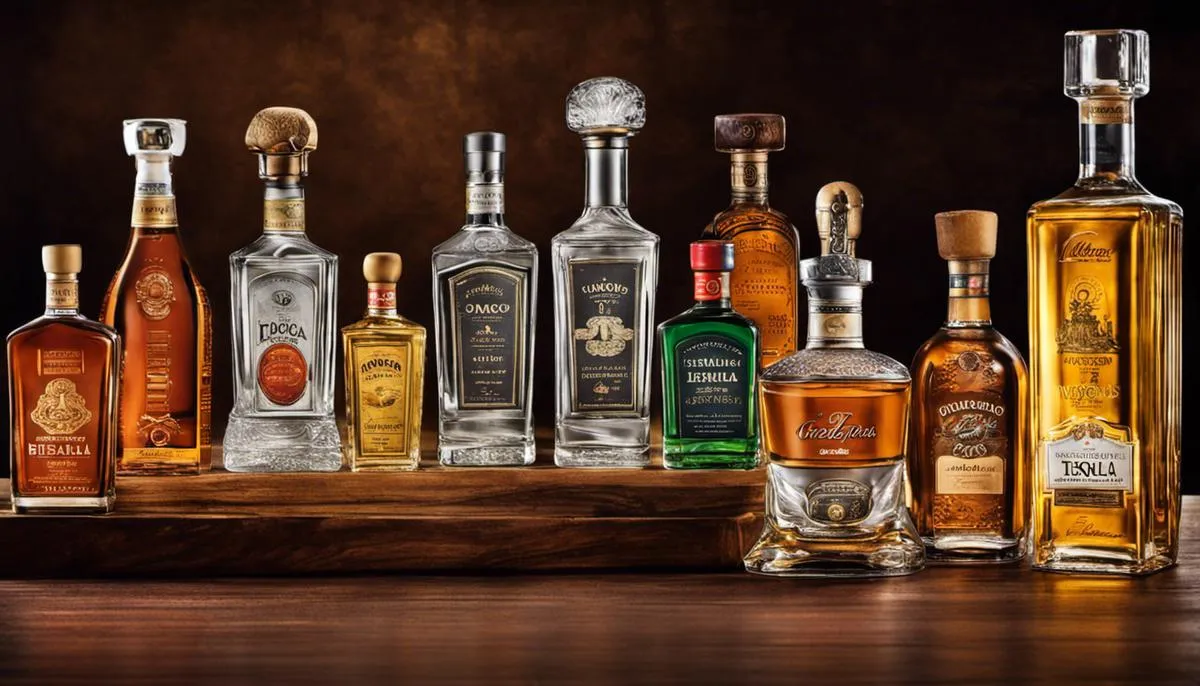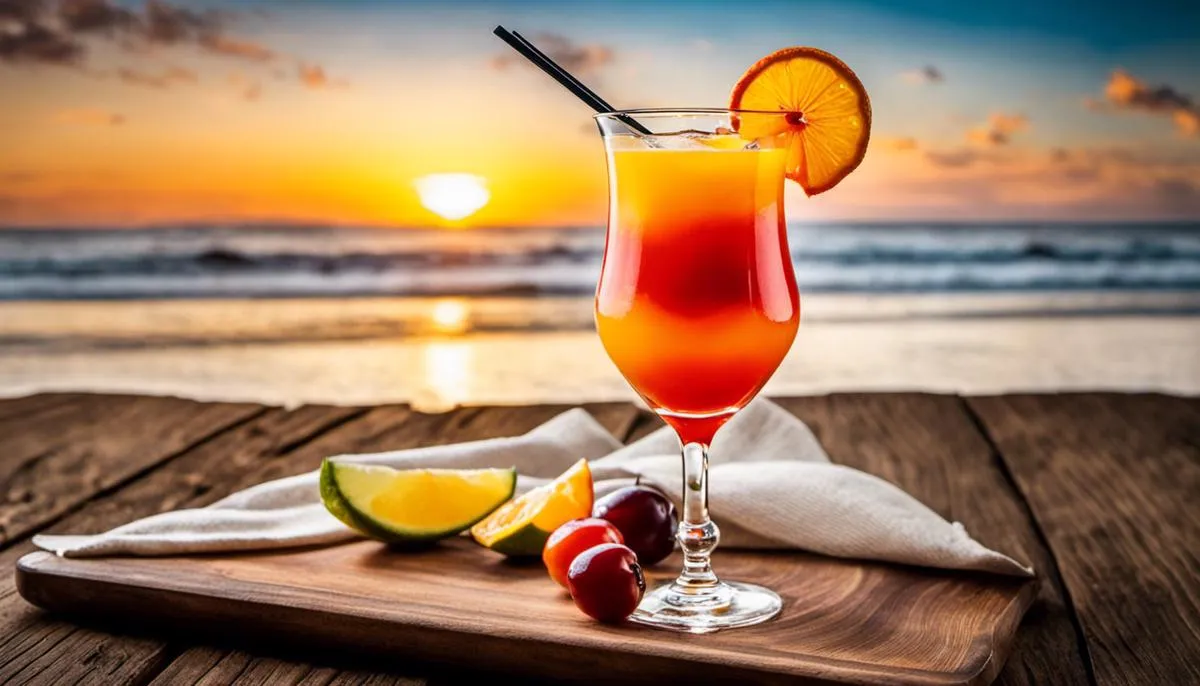Embarking on a journey to discover one of the most fascinating aspects of a connoisseur’s universe, this exploration immerses us deep into the world of gin and the captivating cocktail called the “Gin Fizz”. The pursuit of crafting the perfect cocktail is made exciting through the exploration of gin’s nuanced origins, varieties, and flavor profiles. We will sail through the insightful waves of mixology basics that shed light on critical techniques such as shaking, stirring, and layering, backed by a clear understanding of cocktail glassware. The focus subsequently shifts to unmasking the key ingredients integral to the Gin Fizz and in laying solid ground for the practical implementation of this knowledge, we shall venture into creating the classic Gin Fizz along with indulging in its tempting variants like the royal gin fizz and the Ramos gin fizz.
Understanding Gin
Understanding Gin Origins
Exploring the world of gin requires a step back in time to understand its origins. The invention of gin, or “genever” as it was originally called, can be traced back to the Middle Ages, emerging from Holland and Belgium. Although historically it was used for medicinal purposes, its popularity as a drink truly kicked off in the mid-17th century due to the British and their fondness of “genever.”
Varieties of Gin
Deciding on the right gin for your cocktail necessitates a knowledge of the different varieties available. The four primary types to know are London Dry, Plymouth, Old Tom, and Genever.
- London Dry gin is notably crisp and dry, often recommended for mixed drinks, having an implicit but not overwhelmingly juniper flavor.
- Plymouth gin, named after the English city, is slightly sweet and is ideal for those favoring a more subdued juniper profile.
- Old Tom gin, which can be described as the transitional gin between London Dry and Genever, is sweeter than both and prone to use in classic cocktail recipes.
- Genever or Dutch gin, a maltier and sweeter option, is perfect for those seeking a unique twist on the traditional gin taste.
Exploring Flavor Profiles
Every type of gin offers its unique flavor profile. This is largely due to the variety and quantity of botanicals used in their distillation process. The defining botanical in traditional gin is juniper. However, contemporary gins often layer other flavors.
For instance, London Dry, while maintaining a dominant juniper taste, also incorporates flavors from other botanicals like cassia bark, angelica, and coriander.
Plymouth gin, although it shares a few botanical ingredients with London Dry, distinguishes itself through a more earthy flavor with hints of citrus and spiciness.
The Old Tom style of gin includes a slightly pronounced sweetness and fits into a flavor category between London Dry and Genever.
Genever is distinct from the rest, bearing a malted grain base and offering a complexity of flavors that can range from botanical to slightly fruity, depending on the brand.
The Importance of Choosing the Right Gin
Choosing the right gin is a critical step in making the perfect gin fizz. For example, a classic gin fizz typically calls for a gin with a robust juniper flavor, like a London Dry. However, those who prefer a sweeter or more complex flavor might opt for Old Tom or Genever. Understanding gin’s history, its varieties, and flavor profiles will significantly enhance your cocktail-making experience, including your gin fizz.

Mixology Basics
Mixology Basics: The Art of Shaking
The purpose of shaking a cocktail is to mix, chill and dilute the drink. When shaking cocktails, first, fill a cocktail shaker halfway with ice cubes. Pour the necessary ingredients over the ice. Ensure the lid or the Boston glass is on firmly, then hold the shaker with both hands (one on top and one beneath) and shake vigorously over your shoulder. Shake for at least ten seconds for a well-mixed cocktail. Shaking not only mixes the components, but also provides a vehicle for aeration, which can bring out the flavors of the drink ingredients.
Stirring: Patience and Precision
In contrast to shaking, stirring a cocktail produces a smoother texture since it does not incorporate air in. This method is essential for drinks composed purely of alcoholic components or when you want to serve a drink clear and free of ice chips. To stir a cocktail, you will need a long-handled spoon. Place your spoon between the glass and ice, then stir gently. The goal is to make the ice move and not the drink. The technique requires patience, but it ensures that the cocktail is mixed evenly and becomes ideally chilled.
Layering: For Visual Impact
Layering cocktails is a more intricate procedure done for aesthetic reasons rather than enhancing the taste. You must understand the specific gravity or weight of each spirit to layer it accordingly. Denser ingredients go to the bottom, and lighter ones are layered on top. Using an upside-down spoon against the inside of the glass, pour the alcohol gently so it trickles down the spoon and onto the previous layer. This assists in preventing the layers from mixing.
Understanding Glassware
It’s essential to understand that each type of glassware is designed with a purpose. For example, stemware like Martini glasses and Coupe glasses are used to serve straight-up cocktails — meaning without ice. The stem allows the drinker to hold the glass without warming the drink with their body heat.
Collins glasses or highball glasses are tall and narrow, ideal for long drinks with a lot of mixers and ice. Their design allows the guest to hold the glass while minimizing the transfer of heat from the hand to the drink.
Rocks glasses, otherwise known as Old Fashioned glasses, are short and wide, fitting cocktails served over ice, or “on the rocks.”
Each of these Mixology techniques and their corresponding equipment plays a significant role in creating the perfect cocktail, including its presentation, aroma, taste, and overall experience. From the classic Gin Fizz to more complex mixtures, these basics provide the groundwork to experiment and perfect your art of cocktail making.

Ingredients for Gin Fizz
Ingredients for a Gin Fizz
When you want to make a gin fizz, you’ll require a few specific ingredients. These include gin, lemon juice, sugar syrup, soda water, and an egg white.
Gin is the base spirit in this cocktail. It is a distilled alcoholic drink that derives its predominant flavor from juniper berries. When selecting gin for your cocktail, consider its quality and flavor profile. Typically, a London Dry gin works well for a gin fizz due to its balanced juniper-forward flavor.
Lemon juice adds a fresh, tangy flavor to the gin fizz, and also helps to break down the other ingredients. Freshly squeezed lemon juice is always recommended rather than packaged lemon juice as it offers a fresher, more vibrant flavor.
Sugar syrup, also known as simple syrup, is essential for this cocktail as it sweetens and balances out the tartness of the lemon juice. You can easily make your sugar syrup at home by dissolving equal parts of sugar in hot water and allowing it to cool before using.
Soda water, or club soda, is the carbonated element that gives the gin fizz its distinctive fizzy nature. The fizziness of the soda water helps meld the flavors together and brings a delightful bubbly texture to the drink.
An optional ingredient in a gin fizz is an egg white. The egg white creates a foamy layer on top of the cocktail when it is shaken vigorously. This not only adds a creamy texture to the drink but also enhances its presentation. If you are using egg white, ensure it is fresh and of good quality. Some people may prefer to omit this due to dietary restrictions or preferences.
To garnish your gin fizz, a slice of lemon or a maraschino cherry can be used. The garnish adds a visual element to the cocktail but doesn’t significantly impact the flavor.
When making a gin fizz, always remember that the quality of your ingredients can greatly affect the end result. Always try to use the freshest and highest quality ingredients possible to create a delicious and refreshing gin fizz.
The Interaction of Ingredients
One of the beautiful aspects of a gin fizz is watching how the ingredients interact. The sugar syrup and lemon juice muddle together with the gin, while the fizzy soda water spreads these flavors throughout the cocktail. If you’re using egg white, the shaking process emulsifies it, creating a creamy froth that sits atop the cocktail. It’s captivating, relatively simple to create, and results in an impressive cocktail.
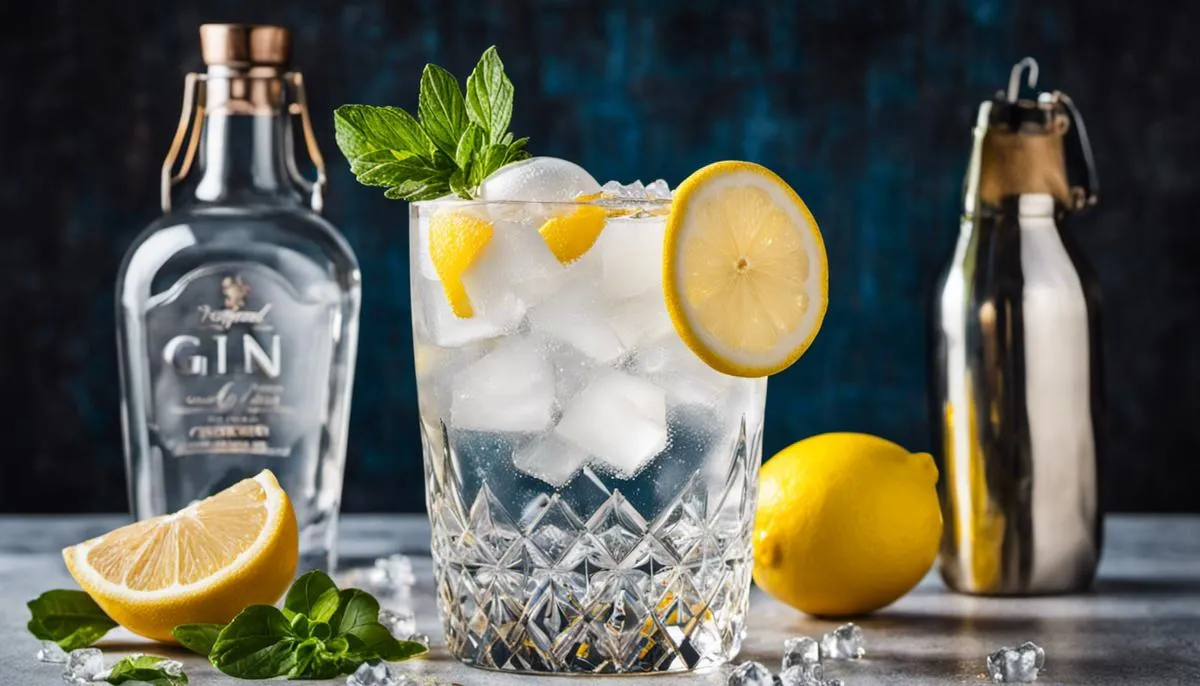
Making Gin Fizz
Classic Gin Fizz
To make a classic gin fizz, you’ll need: 2 oz gin, 1 oz lemon juice, 3/4 oz simple syrup, and 3 oz club soda. Start by combining the gin, lemon juice, and simple syrup in a cocktail shaker. Shake vigorously for about 15 seconds to combine the ingredients. Pour the mixture into a glass and top with club soda. Give it a gentle stir and serve immediately.
Royal Gin Fizz
The royal gin fizz is a slightly different variant of the classic gin fizz. The ingredients are: 2 oz gin, 1 oz lemon juice, 1 teaspoon of superfine sugar, 1 egg white, 2 oz heavy cream, 1 slice of lemon, 1 maraschino cherry, and cold club soda. Mix the gin, lemon juice, superfine sugar, egg white, and heavy cream in a cocktail shaker filled with ice. Shake well for around 20 seconds. Strain into a highball glass without ice, then top it off with cold club soda. Garnish with a slice of lemon and a maraschino cherry.
Ramos Gin Fizz
For a Ramos gin fizz, you’ll need: 2 oz gin, 1/2 oz lime juice, 1/2 oz lemon juice, 1 oz simple syrup, 1 oz cream, 1 egg white, three dashes of orange flower water, and club soda. The steps are similar to the previous recipes, but with a few extra ingredients. Combine everything except the club soda in a shaker without ice first, then shake for about a minute. This is known as a “dry shake” and helps to emulsify the egg. Next, add ice to the shaker and shake again until well-chilled. Strain the mixture into a glass and carefully top with club soda. Wait a few seconds for the foam to rise to the top of the glass, then serve.
Remember that when making any cocktail, precise measurements and best quality ingredients will assure the best possible flavor. Also, practice is key in getting the perfect balance of flavors, so don’t be discouraged if your first few attempts aren’t perfect. With a little patience and practice, you’ll be making amazing gin fizzes in no time. Cheers!
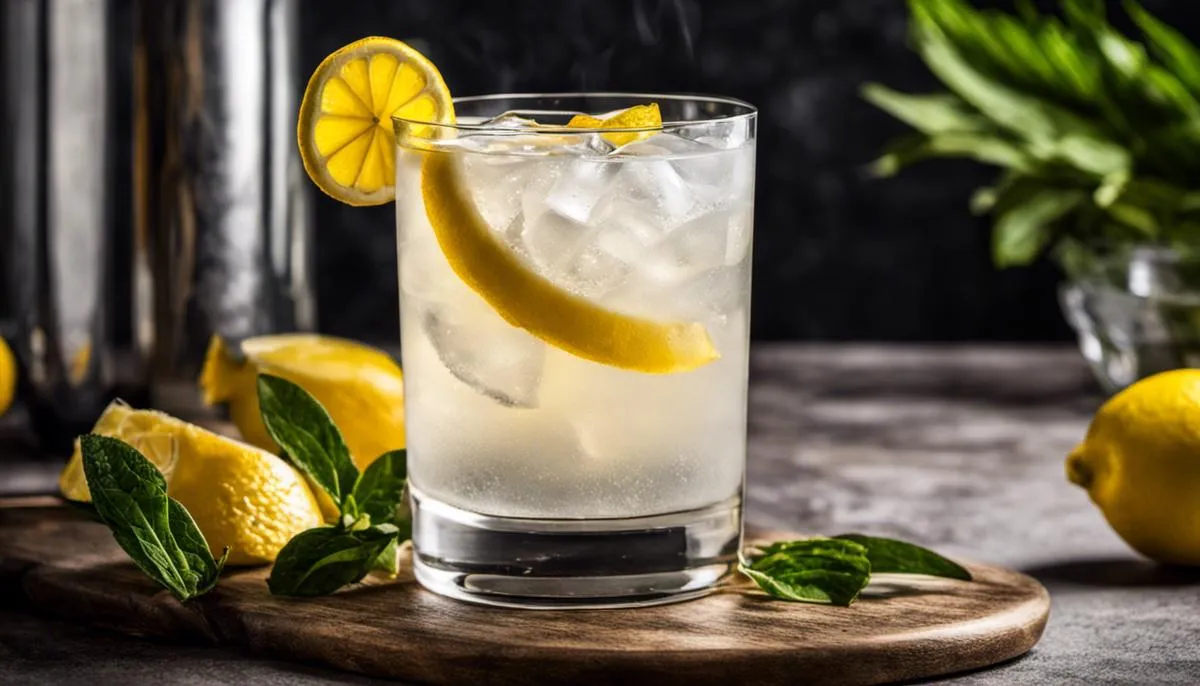
Having ventured deep into the world of gin and mixology, we stand in a place of newfound appreciation for the timeless classic that is the gin fizz. Our exploration has furnished us with a robust understanding of the intricacies of gin, mixology techniques, and quality ingredients which all serve to enhance our cocktail crafting prowess. With practice, the art of making not just a classic gin fizz but also its royal and Ramos variants, becomes second nature. Remember, the pursuit of crafting the perfect cocktail is as exciting as the cocktail itself. So here’s to many more cocktails, filled to the brim with passion, precision and a dash of playful experimentation.

